Wednesday 11 November 2020
#eat / drink #best x y
The X best cod fillets in Rome. Where to eat the legendary fried fish.
Let's clarify one thing: baccalà is not a fish, but the way to preserve it. With the same fish but different methods of preparation, stockfish is obtained.
The term baccalà seems to derive from the German word "bakkel-jau" (salted fish), transposition of "bakel-jau" (hard as a rope).
To be usable, baccalà requires long immersions in cold water, to rehydrate the meat and remove the salt. Not easy to manage and which risks leaving the fish too salty. However, it is not difficult to find fillets that are already boned, peeled and "soaked"; in Rome they are often accompanied by chickpeas (already wet).
Thanks to its ease of conservation, baccalà is used almost everywhere, in Italy and in the world.
In Campania we cook: fried, in casserole, cannaruta, pertecarena.
In Lombardy and Piedmont: fried or stewed.
In Liguria: fried, al verde, sweet and sour, Brandacujun (creamed, but usually stockfish is used).
In Tuscany: alla livornese.
In Basilicata: alla lucana (with the inevitable cruschi peppers).
In Calabria: Cosentina style.
In Veneto: alla vicentina; here too stockfish is used; since in the regional tradition what is actually stockfish is called baccalà (or bacalà), this has generated not a little confusion.
In Sicily: Sicilian, Messina style.
In Spain: in at least 10 different ways.
In Portugal: it is said that there are a thousand recipes.
In Ecuador: fanesca.
In Mexico: a la vizcaina.
In Norway: lutefisk.
But let's come to Rome.
It is prepared alla romana (in a pan with potatoes), stewed (or stew, with raisins and pine nuts), with chickpeas and (the subject of this post and of our adoration) in batter and fried.
The cod fillet is part of the Judeo-Roman culinary tradition. It cannot be missing in the "Roman-style mixed fry" (generally composed of courgette flowers, supplì, artichokes, cauliflower, cream, veal and lamb entrails, apples ... well ... it is very mixed).
- the batter must produce a frying with the right compromise between soft and crunchy;
- the quality of the raw material must be excellent.
Speaking of raw materials, it is worth remembering that there are small variations in the production process of baccalà; the most valuable variant is the one called San Giovanni (or Gaspè, from the name of a peninsula in Quebec), which has many points in common with the preparation of stockfish. Distinguished by a long drying phase in the sun and a low salt content, it requires a manufacturing process that hides small mysteries. The brine formula is in fact still secret and jealously guarded by Canadian fishermen.
Mainly it is a course from pizzeria or pizza "by the slice", together with the inevitable supplì and courgette flowers; but you can also find it in many restaurants. You can follow some clues to understand if you are about to order something decent:
- if you read "the product could be frozen" ... avoid: frozen baccalà should not exist;
- if the price is too low ... avoid: good baccalà is not cheap; take the price of the supplì as a standard unit of measurement (which in Rome is a bit like the price of coffee in Naples): it must cost at least 4 times more;
- if the price is too low and they also bring you more than one piece per portion ... avoid: the best baccalà is large.
In the link list and map of places where you can eat fillets (list which, considering the popularity of the dish, will be very partial; as usual we await your collaboration for additions and changes).
It is actually Northern cod, caught in the North Pacific Ocean and the North Atlantic Ocean. So not really a local or Mediterranean fish.
In general, cod is bled directly on board the fishing boats; once the belly and head are removed, it is washed in running water. At this point:
- by salt, baccalà is obtained;
- by drying it (often in the sun), the stockfish is obtained.The term baccalà seems to derive from the German word "bakkel-jau" (salted fish), transposition of "bakel-jau" (hard as a rope).
To be usable, baccalà requires long immersions in cold water, to rehydrate the meat and remove the salt. Not easy to manage and which risks leaving the fish too salty. However, it is not difficult to find fillets that are already boned, peeled and "soaked"; in Rome they are often accompanied by chickpeas (already wet).
Thanks to its ease of conservation, baccalà is used almost everywhere, in Italy and in the world.
In Campania we cook: fried, in casserole, cannaruta, pertecarena.
In Lombardy and Piedmont: fried or stewed.
In Liguria: fried, al verde, sweet and sour, Brandacujun (creamed, but usually stockfish is used).
In Tuscany: alla livornese.
In Basilicata: alla lucana (with the inevitable cruschi peppers).
In Calabria: Cosentina style.
In Veneto: alla vicentina; here too stockfish is used; since in the regional tradition what is actually stockfish is called baccalà (or bacalà), this has generated not a little confusion.
In Sicily: Sicilian, Messina style.
In Spain: in at least 10 different ways.
In Portugal: it is said that there are a thousand recipes.
In Ecuador: fanesca.
In Mexico: a la vizcaina.
In Norway: lutefisk.
But let's come to Rome.
It is prepared alla romana (in a pan with potatoes), stewed (or stew, with raisins and pine nuts), with chickpeas and (the subject of this post and of our adoration) in batter and fried.
The cod fillet is part of the Judeo-Roman culinary tradition. It cannot be missing in the "Roman-style mixed fry" (generally composed of courgette flowers, supplì, artichokes, cauliflower, cream, veal and lamb entrails, apples ... well ... it is very mixed).
Like all Roman dishes, apparently simple, it actually hides many pitfalls:
- if the desalting is too short, the fish will be very salty;
- if it is too long, it will be thin and lacking in consistency;- the batter must produce a frying with the right compromise between soft and crunchy;
- the quality of the raw material must be excellent.
Speaking of raw materials, it is worth remembering that there are small variations in the production process of baccalà; the most valuable variant is the one called San Giovanni (or Gaspè, from the name of a peninsula in Quebec), which has many points in common with the preparation of stockfish. Distinguished by a long drying phase in the sun and a low salt content, it requires a manufacturing process that hides small mysteries. The brine formula is in fact still secret and jealously guarded by Canadian fishermen.
Mainly it is a course from pizzeria or pizza "by the slice", together with the inevitable supplì and courgette flowers; but you can also find it in many restaurants. You can follow some clues to understand if you are about to order something decent:
- if you read "the product could be frozen" ... avoid: frozen baccalà should not exist;
- if the price is too low ... avoid: good baccalà is not cheap; take the price of the supplì as a standard unit of measurement (which in Rome is a bit like the price of coffee in Naples): it must cost at least 4 times more;
- if the price is too low and they also bring you more than one piece per portion ... avoid: the best baccalà is large.
In the link list and map of places where you can eat fillets (list which, considering the popularity of the dish, will be very partial; as usual we await your collaboration for additions and changes).

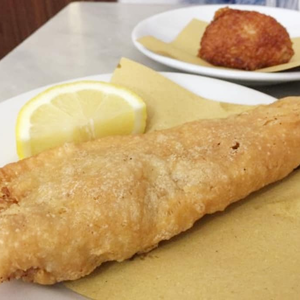
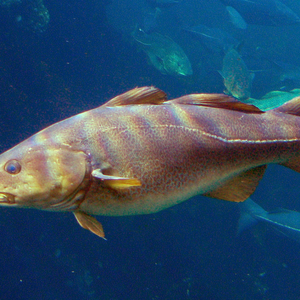
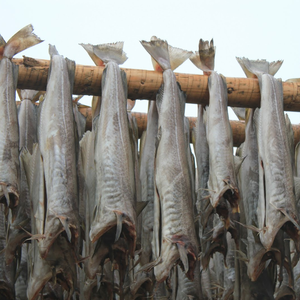
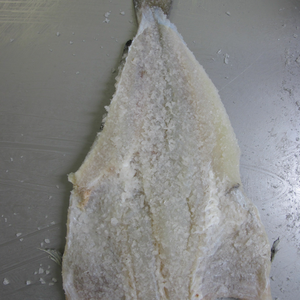
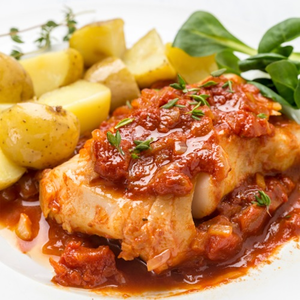
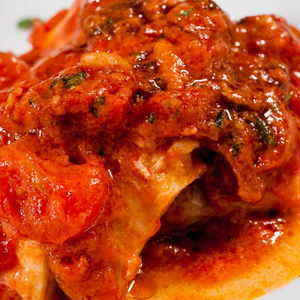
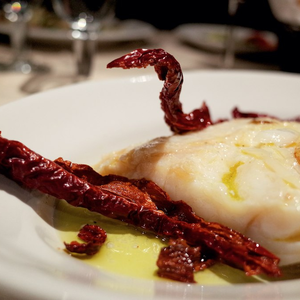
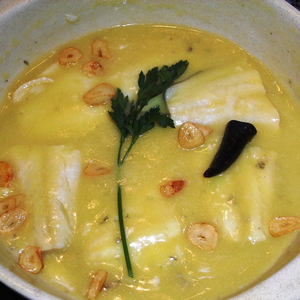
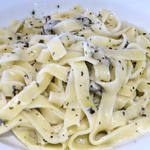 The true origins of the legendary Fettuccine Alfredo.
The true origins of the legendary Fettuccine Alfredo.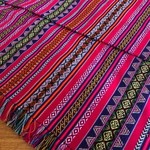 The X best Peruvian restaurants in Rome. Where to eat cheviche according to the tradition of an underrated cuisine.
The X best Peruvian restaurants in Rome. Where to eat cheviche according to the tradition of an underrated cuisine. On the ugliness and uselessness of restaurant websites. Dedicated to restaurateurs (Roman and not).
On the ugliness and uselessness of restaurant websites. Dedicated to restaurateurs (Roman and not). [EVENT CANCELED] Sicilian festival in Piazza San Giovanni Bosco. From 22 to 25 October 2020.
[EVENT CANCELED] Sicilian festival in Piazza San Giovanni Bosco. From 22 to 25 October 2020.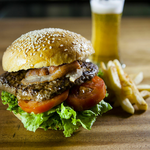 Street Food in Rome. Three appointments in September 2020.
Street Food in Rome. Three appointments in September 2020.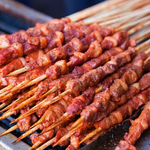 The best X arrosticini in Rome. Where to eat Abruzzese "rustelle".
The best X arrosticini in Rome. Where to eat Abruzzese "rustelle".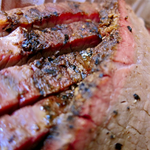 The best X smoked BBQ. Where to eat American smoked meat (in Rome and in Italy).
The best X smoked BBQ. Where to eat American smoked meat (in Rome and in Italy). DOCG and DOC wines from the province of Rome (and a bit of history).
DOCG and DOC wines from the province of Rome (and a bit of history). The X best "vaccinara" oxtails of Rome. Where to eat the queen of the fifth quarter.
The X best "vaccinara" oxtails of Rome. Where to eat the queen of the fifth quarter. The best X Y in Rome. That is where to eat Y.
The best X Y in Rome. That is where to eat Y. Small guide to restaurants in Rome: Asian cuisine
Small guide to restaurants in Rome: Asian cuisine Farmers' markets reopen: list, map and timetables.
Farmers' markets reopen: list, map and timetables.